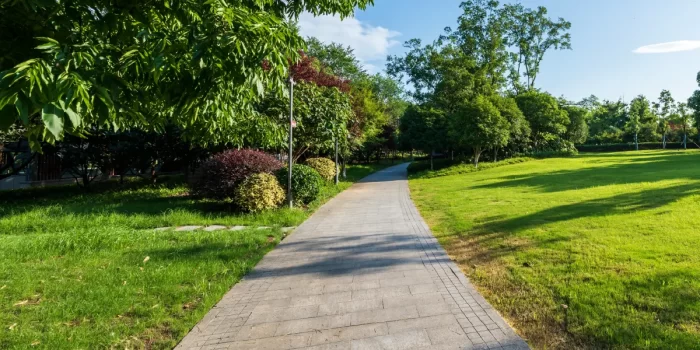Introduction
The built environment health concept explores how human-made spaces affect the well-being of people, animals, and the environment. As cities expand, the interconnection between urban design and health becomes increasingly evident. A One Health approach integrates these elements to promote sustainability, disease prevention, and improved quality of life. In this article, we explore how urban planning can enhance built environment health for all living beings.
You're viewing a members-only article.
To keep reading, please log in or join the One Health Society.
Stay connected to exclusive insights, expert commentary, and opportunities to collaborate across the fields of human, animal, and environmental health.
Already a member? Log In
New here? Join the One Health Society - become One
The One Health Approach to the Built Environment
One Health emphasizes the relationship between human, animal, and environmental health. Urban planning often prioritizes convenience and economic growth, but ignoring sustainability can result in pollution, habitat destruction, and health crises. Incorporating One Health principles into city planning ensures that developments benefit not just humans, but also animals and ecosystems.
How the Built Environment Affects Human Health
Physical Activity and Urban Design
Mental Health and Green Spaces
Green spaces in urban areas alleviate stress, lower anxiety, and improve social interactions. Studies link exposure to nature with reduced depression and enhanced cognitive function. [3] On the other hand, poorly designed environments contribute to mental distress and social isolation.
Air Quality and Respiratory Health
Traffic congestion, industrial emissions, and construction projects impact air quality. Polluted air contributes to respiratory diseases, cardiovascular issues, and premature mortality. [2] Sustainable urban design—such as increasing green spaces and reducing vehicle emissions—can significantly improve air quality.
Access to Healthy Food
The built environment influences dietary habits. Food deserts—areas lacking access to fresh, affordable produce—contribute to obesity and diabetes. Encouraging urban agriculture and integrating grocery stores into residential areas can mitigate this issue. [8]
Impact of the Built Environment on Animal Health
Habitat Loss and Wildlife
Urbanization encroaches on natural habitats, leading to biodiversity decline and increased human-wildlife conflict. Protecting green spaces and creating wildlife corridors can mitigate these issues while promoting ecological balance. [11]
Zoonotic Disease Risks
Close human-wildlife interactions in urban areas heighten the risk of zoonotic disease transmission. Examples include Lyme disease and West Nile virus, which thrive in urbanized environments. Proper waste disposal and habitat preservation reduce disease risks. [1]
Domestic Animal Welfare
Urban living impacts domestic animals, influencing their physical and mental health. Well-designed pet-friendly spaces and responsible pet ownership initiatives enhance the well-being of animals living alongside humans.
Environmental Sustainability in Urban Planning
Sustainable Architecture and Energy Use
Energy-efficient buildings lower carbon emissions and reduce urban heat islands. Features such as solar energy, green roofs, and water recycling systems contribute to environmental and public health benefits. [4]
Water Quality and Waste Management
Urban areas face challenges related to water pollution and improper waste disposal. Implementing green infrastructure—such as rain gardens and permeable surfaces—enhances water quality and reduces flooding risks. [10]
Policy and Collaboration for Healthier Cities
Interdisciplinary Urban Planning
Collaboration between urban planners, public health officials, and environmental scientists is essential. Health Impact Assessments (HIAs) evaluate the health consequences of urban projects, ensuring sustainable and health-conscious development. [9]
Global and Local Initiatives
International programs like the United Nations Sustainable Development Goals and the C40 Cities Climate Leadership Group guide cities toward environmentally responsible urban development. [7]
Conclusion
The built environment health concept highlights the importance of designing cities that support human, animal, and environmental well-being. By applying One Health principles, we can create urban spaces that promote sustainability, disease prevention, and resilience. As professionals across disciplines collaborate, we move toward healthier, more sustainable cities for current and future generations.
References
- Centers for Disease Control and Prevention (CDC). (2020). One Health basics. Available at: https://www.cdc.gov/onehealth/basics/index.html
- D’Amato, G., Cecchi, L., D’Amato, M., & Annesi-Maesano, I. (2014). Urban air pollution and climate change as environmental risk factors of respiratory allergy: An update. Journal of Investigational Allergology and Clinical Immunology, 20(3), 95-102. DOI: 10.1038/s41572-019-0101-9. Available at: [https://www.jiaci.org/issues/vol20issue2/1.pdf
- Castaldelli-Maia, J. M., De Berardis, D., & Bhugra, D. (2019). Urbanization and emerging mental health issues. CNS Spectrums, 24(1), 1-3. DOI: 10.1017/S1092852918001349. Available at: https://www.cambridge.org/core/journals/cns-spectrums/article/abs/urbanization-and-emerging-mental-health-issues/A458AD66F75A7A9711688B695043F9B2
- Haines, A., & Ebi, K. L. (2019). The imperative for climate action to protect health. The New England Journal of Medicine, 380(3), 263-273. DOI: 10.1056/NEJMra1807873. Available at: https://www.nejm.org/doi/full/10.1056/NEJMra1807873
- Kondo, M. C., Fluehr, J. M., McKeon, T., & Branas, C. C. (2018). Urban green space and its impact on human health. International Journal of Environmental Research and Public Health, 15(3), 445. DOI: 10.3390/ijerph15030445. Available at: https://www.mdpi.com/1660-4601/15/3/445
- Sallis, J. F., Cerin, E., Conway, T. L., Adams, M. A., Frank, L. D., Pratt, M., … & Cain, K. L. (2016). Physical activity in relation to urban environments in 14 cities worldwide: A cross-sectional study. The Lancet, 387(10034), 2207-2217. DOI: 10.1016/S0140-6736(15)01284-2. Available at: https://www.thelancet.com/journals/lancet/article/PIIS0140-6736(15)01284-2/fulltext
- United Nations. (2015). Transforming Our World: The 2030 Agenda for Sustainable Development. Available at: https://sustainabledevelopment.un.org/post2015/transformingourworld
- United Nations. (2019). World Urbanization Prospects: The 2018 Revision. Available at: https://population.un.org/wup/assets/WUP2018-Report.pdf
- World Health Organization (WHO). (2015). Connecting Global Priorities: Biodiversity and Human Health – A State of Knowledge Review. Available at: https://www.who.int/publications/i/item/9789241508537
- World Health Organization (WHO). (2018). Housing and health guidelines. Available at: https://www.who.int/publications/i/item/9789241550376
- World Health Organization (WHO). (2020). Global Strategy on Health, Environment and Climate Change: The Transformation Needed to Improve Lives and Well-being Sustainably Through Healthy Environments. Available at: https://www.who.int/publications/i/item/9789240000377













